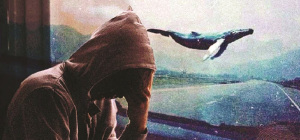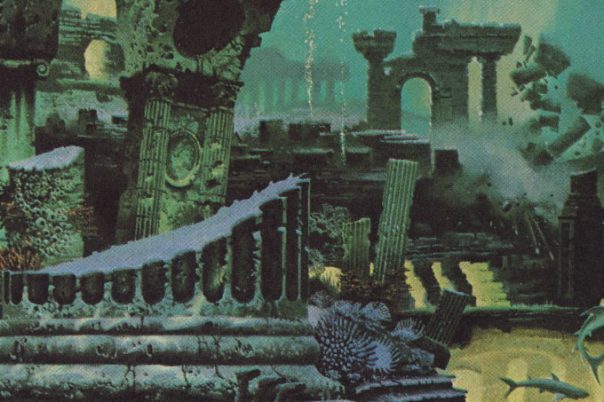 Sunken Atlantis by Paul Alexander
Sunken Atlantis by Paul Alexander
I would like to start this article with a correction to the first article on H.P. Lovecraft’s thoughts on the legend of Atlantis. In the first article, I stated that Lovecraft cited both Ignatius Donnelly’s account of Atlantis (Atlantis: The Antediluvian World, 1882) as well as W. Scott-Elliot’s Atlantis and the Lost Lemuria (1925) in “The Temple.” This is incorrect. Lovecraft mentioned Donnelly’s book in “The Descendent” and Scott-Elliot’s book was mentioned in “The Call of Cthulhu.” While neither book was cited in “The Temple,” Joshi refers to both of them in his explanatory notes for “The Temple” in the Penguin Classics edition of The Thing on the Doorstep and Other Weird Stories (2001). I apologize for the error.
In “The Call of Cthulhu” Professor George Gammell Angell, Professor Emeritus of Semitic Languages from Brown University was compiling information on the Cthulhu Cult and among the manuscript papers were some citations from W. Scott-Elliot’s Atlantis and the Lost Lemuria. As mentioned in Leslie S. Klinger’s The Annotated H.P. Lovecraft (2014) Lovecraft had a 1925 combined edition of these books. The Story of Atlantis was first published in 1896, while The Lost Lemuria was first published in 1904.
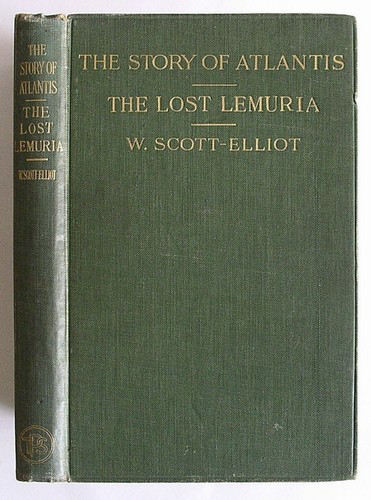
It is interesting to note that Atlantis was supposed to represent a high point of human (or related species) civilization. While the destruction of Atlantis is frequently associated with the Atlanteans meddling with science and / or the power the gods, there are a variety of hypotheses attempting to link some real-life catastrophe to the legend of Atlantis. For example, the land of Thera, now known as the Greek island of Santorini, was partly destroyed by a volcanic eruption about 3,600 years ago. The destruction of Thera is thought to be basis for the idea of Atlantis (http://www.bbc.com/earth/story/20160118-the-atlantis-style-myths-of-sunken-lands-that-are-really-true). However, is the extremely unlikely the Atlantis will actually be directly linked to a real location on Earth.
There have been attempts to link Cthulhu’s sunken City of R’lyeh to Atlantis but as Jason Colavito has stated:
“The imagined “fall” of Cthulhu, however, bears only a superficial resemblance to Atlantis, and even that was intentional. Lovecraft tried to create a (fictional) analogue to Plato’s Atlantis narrative as an answer to the Theosophists and their silly claims about Venusians running occult schools on Lemuria. Plato’s Atlantis sinks because of the Atlanteans’ sins… Cthulhu and R’lyeh sink beneath the waves—just because. Geology happens. There is no moral good or evil implied. It just happened.” – from http://www.jasoncolavito.com/blog/was-cthulhu-a-king-of-atlantis. While in “The Strange High House in the Mist” Lovecraft mentions “…how the kings of Atlantis fought with the slippery blasphemies that wriggled out of rift’s in ocean’s floor…” there is no evidence to indicate that these blasphemies were the spawn of Cthulhu.
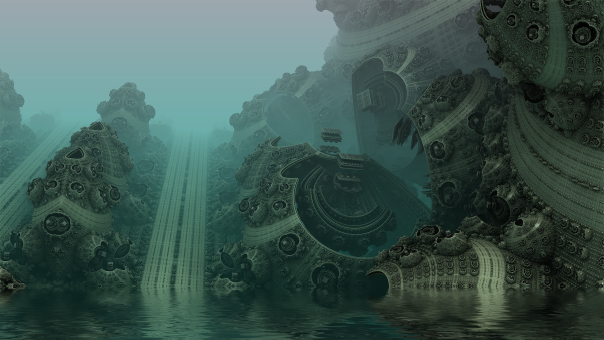
R’lyeh Rising by Welsh Pixie (www.deviantart.com)
Coavito’s statement agrees with Joshi’s statement that Lovecraft saw Atlantis as a myth and liked to incorporate it into his tales. Additionally, and more to the point, Atlantis was supposed to sink somewhere in the Atlantic Ocean, while R’lyeh is located somewhere deep in the Pacific Ocean. Thus, even if there was some sort of correlation between R’lyeh and some mythic sunken land it would have a slightly better chance of it being Lemuria.
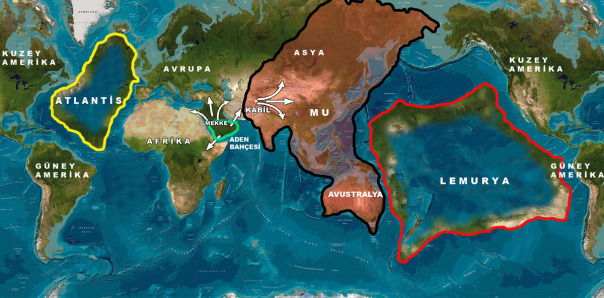
In a few of Lovecraft’s revision tales such as “The Last Test” co-written with Adolphe de Castro and “Medusa’s Coil” co-written with Zealia Bishop there are several references to individuals being descended from the primal race of lost Atlantis and how the Atlantean civilization delved into evil and forbidden knowledge. For example, in “The Last Test” Atlantis was apparently a “hotbed” of evil cult activity and it is hoped that “…no one will ever drag up that horror from the deep.” This may be a possible reference to the Atlantean’s attempting to contact the Old Ones from outside of our Universe. There is a reference to this in “Medusa’s Coil” where “…the frightful secret that has come down from the days of Cthulhu and the Elder Ones – the secret that was nearly wiped out when Atlantis sank…”
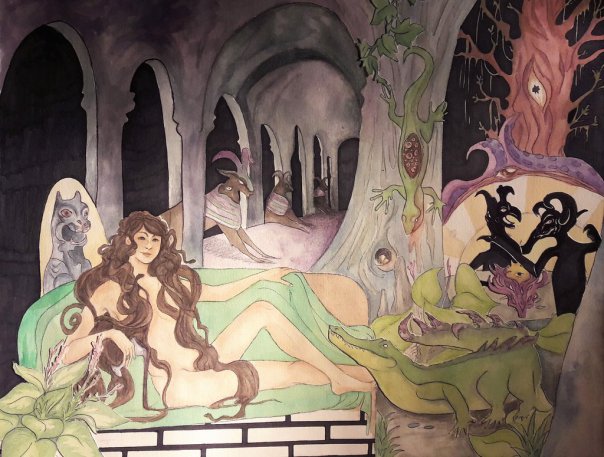 Medusa’s Coil by Mrs. Fish (www.deviantart.com)
Medusa’s Coil by Mrs. Fish (www.deviantart.com)
In the tale “The Mound” written by Lovecraft and Zealia Bishop, the underground civilization discovered by the Spaniard Zamacona was said to occasionally receive visitors from the upper world. According to the individuals who Zamacona met, the last time they encountered someone from the outer world was when “…refugees straggled back from Atlantis and Lemuria aeons before.” If these refugees straggled back from these sunken kingdoms, is it possible that the Atlanteans and Lemurians were of the same decent as those who live under the mound? If this is the case, the various technologies that the mound civilization possess (e.g. dematerialization and dream-projection) may has also been possessed by Atlanteans.
In Lovecraft’s novel At the Mountains of Madness the Elder Thing’s Antarctic Palaeogaean megalopolis was compared to both Atlantis and Lemuria, as well as other ancient civilizations. Additionally, in Out of the Aeons, co-written with Hazel Heald, Lovecraft mentions that cults of the Old One Ghatanothoa were established in Atlantis. Finally, as previously mentioned, the Shining Trapezohedron sunk with Atlantis, only later to be found by a Minoan fisherman in his nets.
 Ghatanothoa by Michael Bukowski (www.yog-blogsoth.blogspot.com)
Ghatanothoa by Michael Bukowski (www.yog-blogsoth.blogspot.com)
In conclusion, it is extremely unlikely the Cthulhu’s R’lyeh and Atlantis were the same place, simply based on the fact that one is located in the Pacific Ocean and the other in the Atlantic Ocean. Additionally, there is no evidence to support that R’lyeh was Lemuria. However, the people of Atlantis may have been related to the people who live under the Earth as documented in “The Mound.” Also, the Atlanteans may have been attempting to contact the Old Ones or harness their powers in the manipulation of matter, energy, time and space. These attempts of communication (e.g. the Shining Trapezohedron) may have failed miserably and resulted in the downfall of the civilization and the destruction of their Island paradise.
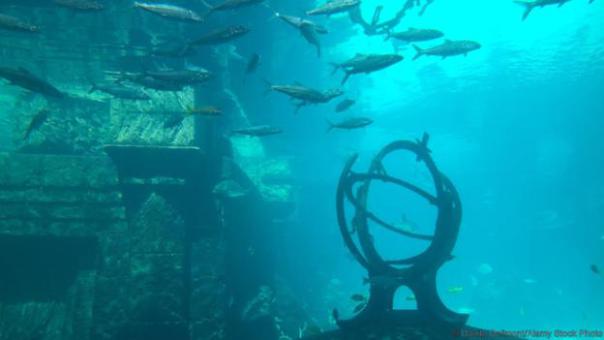
Next time we will discuss how the concept of what a galaxy is changed over the course of Lovecraft’s lifetime. Thank you – Fred.
Advertisements Share this:




